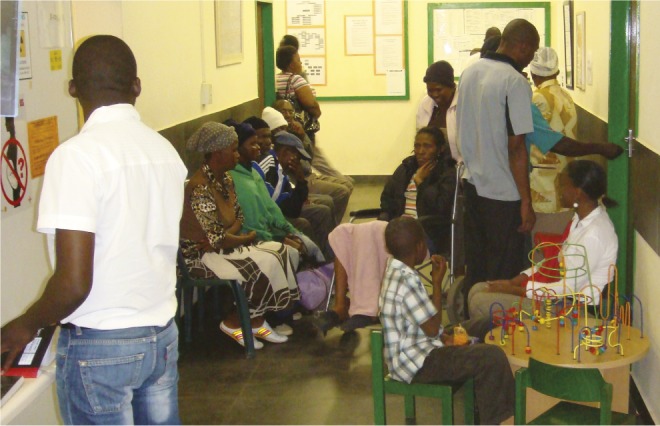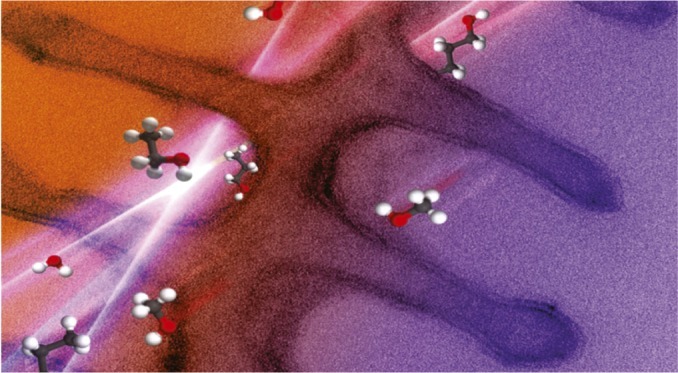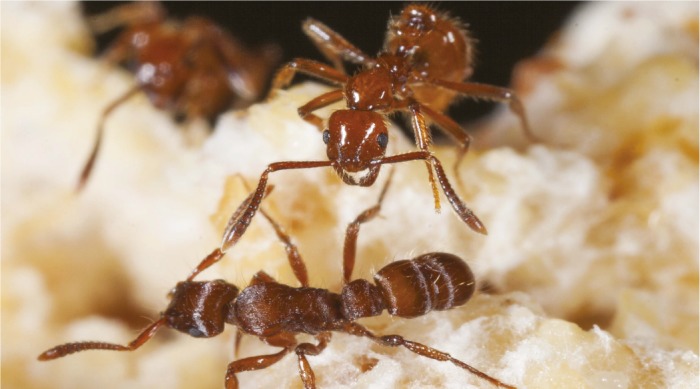Potential testing and treatment strategies for eliminating HIV

Patients waiting for HIV testing and care in the Ndlovu health care center in Groblersdal in rural South Africa. Image courtesy of Hugo Tempelman (Ndlovu Care Group, Groblersdal, South Africa).
Theoretically, HIV could be eliminated from endemic countries if entire populations were tested and enough infected individuals were treated with antiretroviral drugs, but the frequency of testing required and the proportion of those infected who would need to receive treatment are unclear. Mirjam Kretzschmar et al. (pp. 15538–15543) developed a model of HIV transmission that incorporates the concept of an elimination threshold, defined as the level of treatment above which the infection cannot persist in an endemic steady state. Similar to previous models, the authors’ model describes the progression of infection through various stages and uses estimates of the speed of transmission between individuals and the rate of treatment uptake and dropout to predict the likely spread of infection. The authors also considered variations in transmission dynamics over the course of infection, as an estimated 36% of transmissions occur during the first year of infection, and many of these would not be prevented by annual screening. According to the authors, annual screening combined with antiretroviral drug therapy for all HIV-infected individuals must achieve more than 85% coverage in order to approach elimination in sub-Saharan African countries. However, additional interventions that substantially reduce the reproduction rate of the virus (for example, by lowering the partner change rate in high-risk subgroups) can reduce the elimination threshold to a more feasible number. — C.B.
Surface polarity gradient in Morpho butterfly wings

Surface polarity gradient on Morpho butterfly scales inspires new sensors. Image courtesy of GE Global Research.
The iridescence of tropical Morpho butterflies has driven more than a century of research. A decade ago, researchers demonstrated that nanopatterned ridges on the insects’ wing scales interact with light and produce multilayer interference and diffraction that account for the vivid coloring. Extending those findings, Radislav Potyrailo et al. (pp. 15567–15572) identified a vertical surface polarity gradient that runs from the ridges’ polar tops to less polar bottoms. After verifying the existence of the gradient with complementary characterization techniques, the authors extrapolated the biological design to a general mechanism for selective vapor response in Morpho nanostructures. According to the mechanism, the authors report, vapors with different polarities are preferentially adsorbed onto the respective regions of the ridges and expressed in corresponding spectral regions of the reflectance spectra. According to the authors, the biological patterning of vertical surface polarity gradients can inspire technological innovations ranging from security tags and self-cleaning surfaces to protective clothing and gas sensors, in the same way that the mechanism of Morpho butterflies’ iridescence inspired designs for displays, fabrics, and cosmetics. — T.J.
Boosting the efficacy of methicillin against MRSA
Methicillin-resistant Staphylococcus aureus (MRSA) continues to pose a major public health threat, despite the use of antibiotic resistance-modifying agents, which can help restore antibiotic efficacy by, for example, inhibiting microbial enzymes that degrade antibiotics. Taking cues from a natural strategy for the synthesis of plant-derived resistance-modifying agents, Jessica Podoll et al. (pp. 15573–15578) developed a method to rapidly synthesize a library of 120 polycyclic indoline alkaloids—also found in medicinal plants—with 26 distinct chemical backbones and diverse functional groups. The authors screened the library for compounds that boosted the activity of methicillin against a multidrug-resistant MRSA strain, and found that a tricyclic compound called Of1 effectively rendered the resistant bacterial strain sensitive to the antibiotic. Further, the authors report that Of1 potentiated a range of β-lactam antibiotics against MRSA but showed no such supportive effect on β-lactams against a methicillin-sensitive S. aureus strain. Neither did the compound boost the anti-MRSA efficacy of other antibiotics, such as tetracycline, ciprofloxacin, and vancomycin. In addition, Of1, minimally toxic to mammalian cells at clinically relevant concentrations, did not directly stem the proliferation of methicillin-sensitive or -resistant S. aureus, suggesting an indirect mechanism of action. According to the authors, Of1 might represent a promising weapon in microbiologists’ arsenal against MRSA. — P.N.
Beetle deceives tomato plant with a bacterial decoy

Larva of the Colorado potato beetle feeds on a tomato leaf. Image courtesy of Nick Sloff (Pennsylvania State University, University Park, Pennsylvania).
Plants are vulnerable to diverse biological threats and have evolved two main induced defenses: the jasmonic acid (JA)-regulated pathway, which defends against herbivorous insects, and the salicylic acid (SA)-regulated pathway, which responds to microbial pathogens and is frequently antagonistic with JA. Oral secretions from Colorado potato beetle (CPB) larvae suppress induced defenses in wounded plants. Seung Ho Chung et al. (pp. 15728–15733) investigated the role of symbiotic bacteria in the interaction. When untreated CPB larvae fed on tomato leaves, the larvae deposited bacteria, and the plant expressed JA- and SA-regulated genes. When the authors treated larvae with antibiotics prior to feeding, few bacteria were deposited, expression of SA genes was reduced, and JA gene expression increased, suggesting that bacterial symbionts of CPB redirect the plant’s immune response toward an antimicrobial defense and suppress the response to the insect. The authors cultured 22 bacterial isolates from CPB larvae and identified three isolates capable of suppressing the JA-regulated response when they were applied to mechanically wounded plants. Application of flagellin purified from one Pseudomonas isolate was sufficient to suppress the JA-regulated pathway. According to the authors, the results reveal a strategy for herbivore evasion of plant defenses, using symbiotic bacteria as a decoy that tricks the plant into perceiving a herbivore threat as microbial and results in enhanced larval growth. — C.B.
The surprising benefits of social parasitism

Megalomyrmex guest ant parasite (Top) confronts the Gnamptogenys hartmani raider ant (Bottom).
Newly mated queens of the parasitic ant Megalomyrmex stealthily enter and establish colonies in the fungal gardens of the fungus-growing Sericomyrmex host ants. The parasitic ants hamper the growth of the host colonies by feeding on host broods and impede colony reproduction and dispersal by clipping the wings of host virgin queens. Rachelle Adams et al. (pp. 15752–15757) report that the parasitic guest ants confer a previously unrecognized survival advantage on their hosts, thus explaining their high prevalence in some host populations. Using laboratory experiments, the authors found that the parasitic guests use potent alkaloids to defend the host colonies against the raiding agro-predatory ant Gnamptogenys hartmani, which usurps Sericomyrmex gardens and nests. The authors report that the parasitic guests are more efficient than the hosts at killing the raiding predators, and that even a moderate number of parasitic guests might provide protection against predatory attacks, effectively reducing host ant mortality. In addition, the authors demonstrated that scouts of the raiders prefer to recruit nestmates to Sericomyrmex colonies whose odor indicates the absence of the parasitic guest ants. According to the authors, Megalomyrmex ants might serve as a functional soldier caste that protects its hosts, similar to the expensive contingents of mercenary soldiers maintained in some medieval cities to ward off invasive mobile armies. —P.N.
Men’s testes size negatively tied to parenting involvement

Testes size tied to parenting involvement. Image courtesy of Patrik Hägglund/Wikimedia Commons.
An evolutionary hypothesis called Life History Theory holds that mating and parenting compete for the limited energy animals expend on reproduction. Previous studies have suggested that decreases in testosterone may suppress mating efforts, potentially channeling resources toward paternal care of infants. Jennifer Mascaro et al. (pp. 15746–15751) investigated the link between testes size and parenting investment among men, given that testes volume is associated with sperm production and testosterone levels. The authors recruited 70 biological fathers in and around Atlanta who were 21–43 years of age and had 1–2-year-old children, and used MRI to measure the men’s testes volumes and monitor brain activity in a region implicated in parental motivation, while the men viewed photographs of their own child, a stranger’s child, or an adult stranger. The men’s partners also answered a parenting questionnaire that queried the fathers’ involvement in tasks such as taking children to health care visits and attending to children at night. The authors report that fathers’ testes size was negatively tied to nurturing-related brain activity triggered while they viewed pictures of their own child. In particular, fathers who were more responsive than others to their child’s emotional faces tended to have smaller testes and be more involved in infant care. According to the authors, the link between testes size and parenting-related brain activity suggests a trade-off between begetting and rearing offspring. — P.N.


